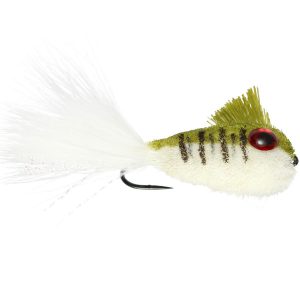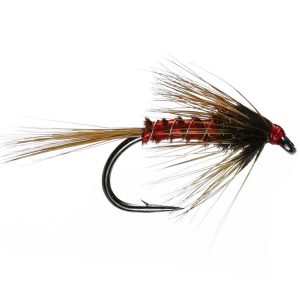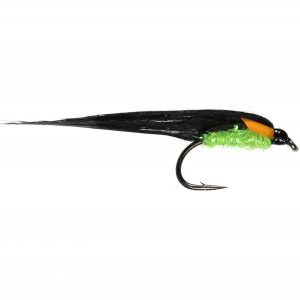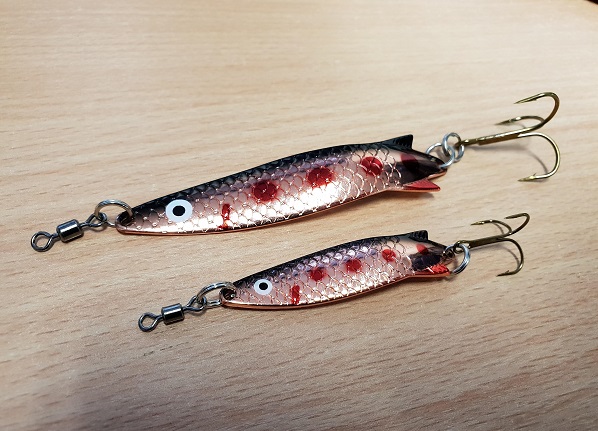All reservoir anglers dream of catching a large overwintered trout and if you fish regularly, the law of averages dictates that occasionally you will do just that. But have you ever wondered whether you can improve your odds of catching these resident fish?
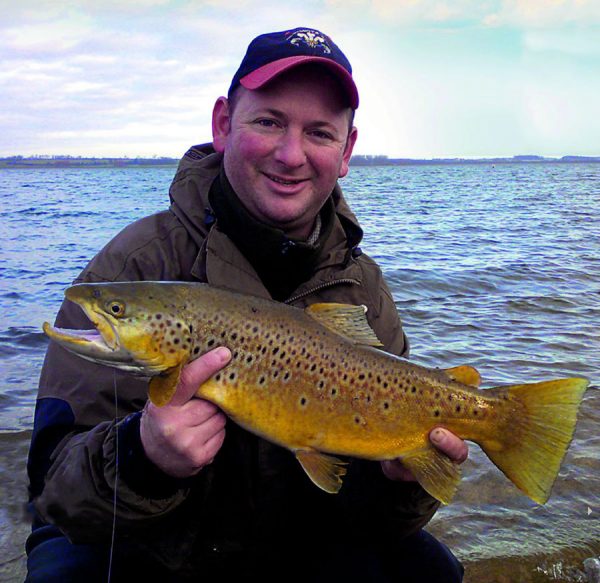
The short answer is, yes, you can. It is not an exact science, there are no foolproof methods or patterns, each reservoir has a unique ecosystem and conditions vary year in, year out. However, we believe the principles of targeting resident fish remain the same no matter which reservoir you fish, and by applying the logical approach outlined in this article you can become more successful.
IDENTIFY THE OVERWINTERED TROUT
We put reservoir trout in two categories. Fish under 4 lb will have been in the reservoir for less than 12 months and despite popular belief, they are at best only well-mended, hard-fighting, early or late-season fish that are no more difficult to catch than a fresh stockie. Overwintered trout weigh more than 4 lb and have been in the reservoir for at least a year. These fish have wised up and are what we call “educated”. They have been feeding naturally over the course of a season and understand what their food looks like and how it behaves, ie it’s not bright orange and pulled at 100 mph. They are, in our opinion, a much more challenging fish to catch.

FIND THEIR FOOD
Overwintered fish will almost always be found where there is a large food source. The trick is to find it. On most reservoirs it will be buzzers, shrimps, corixa and fry and the best places to search are near structures. Target weedbeds, pontoons, anchored sailing boats, towers, inlets, streams, marker buoys and drop-offs. However, contrary to popular belief overwintered fish don’t often get preoccupied with one food source – they are not programmed that way. Look at the stomach or throat contents of a 4 lb-plus rainbow and it will often contain a multitude of foods. It would make little difference if you were fishing a Cruncher, Pheasant-tail, Diawl Bach or Hopper, so long as it was presented correctly at the right depth. This opportunist feeding also explains why anglers catch on a variety of different patterns when targeting the same fish in the same area. Conversely, stockies can be caught anywhere on a reservoir. They haven’t yet learned how to find the major food groups and can be caught in areas with little food.
WEEDBEDS AND DEEPER WATER
Reservoir water levels greatly affect where resident fish will be found. Weedbeds die as water levels drop over the course of a season and those that remain are often out of reach of the bank angler at the beginning of the following season when the reservoir is full again. Yet it is here that resident fish will often be feeding. Because the shallows at the start of the season are often devoid of food, instead target areas that are naturally deeper close to the bank that didn’t dry out at the end of the previous season.
TIME IT RIGHT
The best time to fish is first and last light. These one-hour windows of opportunity at the extremes of the day are when resident fish will feed most confidently as they leave the safety of the depths to search for food in the shallows. The exception is in May during the buzzer hatch, which can happen at any time.

DISCOVER THE CORRECT DEPTH
The depth at which you present your fly is the second-most important factor when targeting trout. Fish do not want to expend energy moving up and down in the water column if they don’t have to (the only exception is when fishing a Floating Fry, which they will move some distance to the surface to take). They would rather hold at the depth the food is concentrated, thereby using the least energy for the greatest reward. As a general rule, larger fish (especially big brownies) tend to hold in deeper water than recently stocked fish.
APPROACH STEALTHILY
From June onwards the water warms significantly and new weedbeds (those that died over winter or when the water levels dropped) become established. They are home to shrimp, pin-fry, corixa … and resident trout. Many anglers find these fish difficult to catch. The water is usually shallow and clear and fish are highly visible. You will often see good trout cruising over the weedbeds only feet from the bank, confidently taking food in their path. There is a temptation to rush to the water’s edge and frantically cast at every fish you see, especially if they’re big. But remember, the angler is also visible to the trout. Numerous casts, weighted flies, and an animated angler only do one thing – spook the fish and push them out of reach. Patience and a stealthy approach are vital.
RETRIEVE SLOWLY
Stockies undoubtedly prefer a fast retrieve whether you’re fishing with lures or dry-flies, and this should be avoided. Although a fast retrieve will work with a big lure and big fish I estimate that 80 per cent of the overwintered trout I catch come to patterns fished statically or with a very slow figure-of-eight retrieve. I sometimes introduce one or perhaps two long, sharp pulls halfway back to induce any following fish to take. A change in angle of the fly as it swims can induce a take from a following fish, hence the reason you often get takes or boils as you lift off. You must capitalise on this by trying the simple “hang and drop back” method. Having retrieved your flies almost to the bank and with the rod tip raised to 10 or 11 o’clock before you lift the flies off the water, slowly lower the rod again by about four inches (the drop back), all the while looking for any movement of the line. If you see a take before you feel it (often you don’t feel it) or if you feel any resistance, strike hard. Striking hard is important. Don’t just lift into the fish – the rod will absorb the take and you won’t set the hook. Use the leader and braided loop as an indicator.
Tackle is subjective, but we recommend a 9 ft 6 in or 10 ft rod, rated AFTM 5, 6 or 7. Good-quality, clear, co-polymer leader material is essential. It’s thin, strong and does not sink as fast as fluorocarbon. It will not pull your flies down into the weed in shallow water. However, it must be degreased to remove its shine. When fishing in shallow, clear water, your flies must remain high and display the correct silhouette. Any droppers you fish can easily snag weed (hence why we recommend fishing with a maximum of two flies). By making fewer casts to avoid spooking fish you are inevitably more likely to fish with a desirable static or slow retrieve. As an initial line of attack try a 12 ft-15 ft leader of 8 lb co-polymer with a Floating Fry on the point and a size 12 red Nemo Cruncher on the dropper. The dropper is just 2 ft from the point fly because in shallow water trout will have a very small window of vision. In flat calms, fish are often attracted by the Floating Fry, but will then take the subsurface Cruncher. When there is a ripple or wave, they will take both patterns equally. Really big fish of 5 lb and more usually only take the fry imitation. In a flat calm it’s sometimes worth swapping the Floating Fry for a Suspender Minkie (Zonker). Its mink wing imparts a small amount of movement, which is often all that’s needed to turn swirls into positive takes (a Suspender Minkie or Zonker can also be given a sharp strip to create a disturbance that can attract the fish to your cast). A Humungous Booby (or Snake Booby) fished deep and slow on a fast-sinking line, Di-5 or 7, is undoubtedly a very effective method of catching big trout throughout the season. It ticks all the boxes: correct profile, enticing movement, correct colour, disturbance and depth. It has the perfect presentation. Your sinking line is hard on the bottom and your fly is popped up, ensuring there is no silhouette of the fly-line to spook fish. Use a slow retrieve and an occasional pause for four or five seconds, so that you make fewer casts and therefore cause less disturbance. A slight tweak occasionally worth trying when the fish are fixated on fry is to fish a Floating Fry popped up off the bottom. Fish it statically with the odd 2 in-3 in sharp pull every 30 seconds. When fishing Boobies or Floating Fry try using a Rapala knot, as it allows the fly to move freely and naturally. Black Snake Booby Whether fishing with an indicator or straight-line nymphing try placing a bright coloured nymph on the top dropper (pearl or red rib/back or fluorescent red head). This attracts fish to your flies because it catches the sunlight. It will attract stockies, but it will also attract resident fish to the more natural patterns beneath it. We think this doubles your chances because any big fish that can be tempted to rise from the deeper water to investigate your top dropper must swim by the more natural-looking flies on your cast twice (on the way up and down). Pearl Buzzer When fishing nymphs and Buzzers most anglers feel it is best to have a light (5 mph-9 mph) left-to-right wind, which will allow your team of flies to swing gently around in an arc. This is a very effective method but try using a straight-line nymphing method. Our theory is that by fishing across the wind, the flies are moving too fast and look unnatural to educated fish. So for some fish, movement wins hands down but for quality fish, static is king. Because you are fishing in shallow water, the trout’s runs will be spectacular. Thirty yards of line can be taken in a flash and therefore your drag must be set correctly. If you get an overrun, a tangle or the drag is too stiff, the hook may pull out or straighten, or the leader may snap. If hooked in shallow water, the fish’s first instinct will be to head for deep water some distance away, or a weedbed. Always keep your rod high with as much fly-line off the water as possible because the line causes drag and resistance that can easily pull or straighten small hooks. Watch your fly-line and backing so that it doesn’t tangle around weed or your feet. An over-wintered rainbow trout can take a full fly-line out in six seconds so you have little time to think about what’s happening. Plan ahead. When fishing near a structure, look at the obstructions, consider where the fish will run and decide exactly how you should play it. If the fish runs into open water, great, let it go and play it at distance. If you require any more information on winter trout fly fishing, please contact the Angling Active team. We are more than happy to helpTHREE METHODS TO TRY
Washing line:
Sinking line:

Nymph fishing:
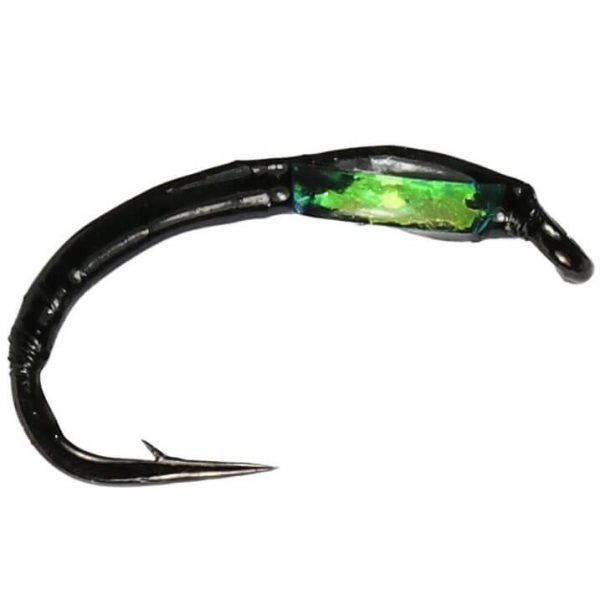
YOU’VE HOOKED ONE… WHAT NEXT?

Invicta
from £1.30Adams
from £1.30Olive Dun
from £1.30Ally McCoist
from £1.30Doobry
from £1.30Grunter - Barbless
from £1.30


